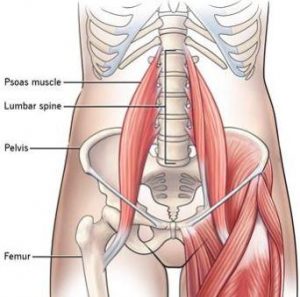Restore: the hips program
how to train hip joint mobility
The hip flexors: passive stretch and pails-rails
The “hip flexors” are a muscle group that’s received a lot of press in the fitness industry over the past few years.
What’s the reason? One is simply the amount of time the average person spends sitting in a chair, in this day and age. 😊
We absolutely need to spend less time in a chair and make sure our hips are balanced, front and back.
That being said, the anterior portion of our hips (specifically the psoas muscle complex (psoas major and minor) is an often misunderstood and subsequently, poorly trained group of muscles.
 So, here’s the deal:
So, here’s the deal:
Typically the psoas group is thought of as a muscle group whose primary function is to flex the hip.
However, what we’ve learned in the relatively recent past through scientific research and a better understanding of human function, is that the psoas group is synergistically related to several other muscles of the trunk, spine, pelvis and hip girdle.
Take a look at the image to the left. Notice how the psoas is attached to BOTH the lumbar spine (your low-back) and the thigh bone (also known as the femur).
There are also distinct fascial connections to the pelvis, diaphragm, and pelvic floor.
(In RESTORE: The Core Program, I discuss the idea – and present a unique exercise called the “Hurdle Hold” – that this particular muscle and others around the middle of our body function as important contributors to core stability).
Can they become chronically “shortened” and weakened due to too much time spent in a chair or on a bike saddle?
Yes, absolutely. 😊
And that’s where this passive stretch and PAILS – RAILS comes in.
Virtually ANYONE reading this will likely benefit from this stretch and strengthen!
This instructional video on anterior hip passive stretch and PAILS – RAILS is detailed. Watch and listen carefully to learn how to move through this STEP BY STEP.
Don’t rush. Enjoy the journey. 🙂
Here’s another “instructional” video where I go through this process again, but in a slightly different context. You may find this very enlightening. Enjoy the learning.
You may have read this before this point, but it certainly bears repeating:
None of these skills or therapy sessions should ever be “one and done.” Your tissues need repetition in order to be able to change.
These routines must be done consistently over a fairly long period of time to have a positive (and more permanent) effect long-term.
What to do?
When in doubt, follow the plan! That is, go to the page STEP 3 – An Overview of Your 6 and 10-week Training Plans, and then to the plans themselves, for specific guidance.
Repetition, repetition, repetition.
Stay with it.
